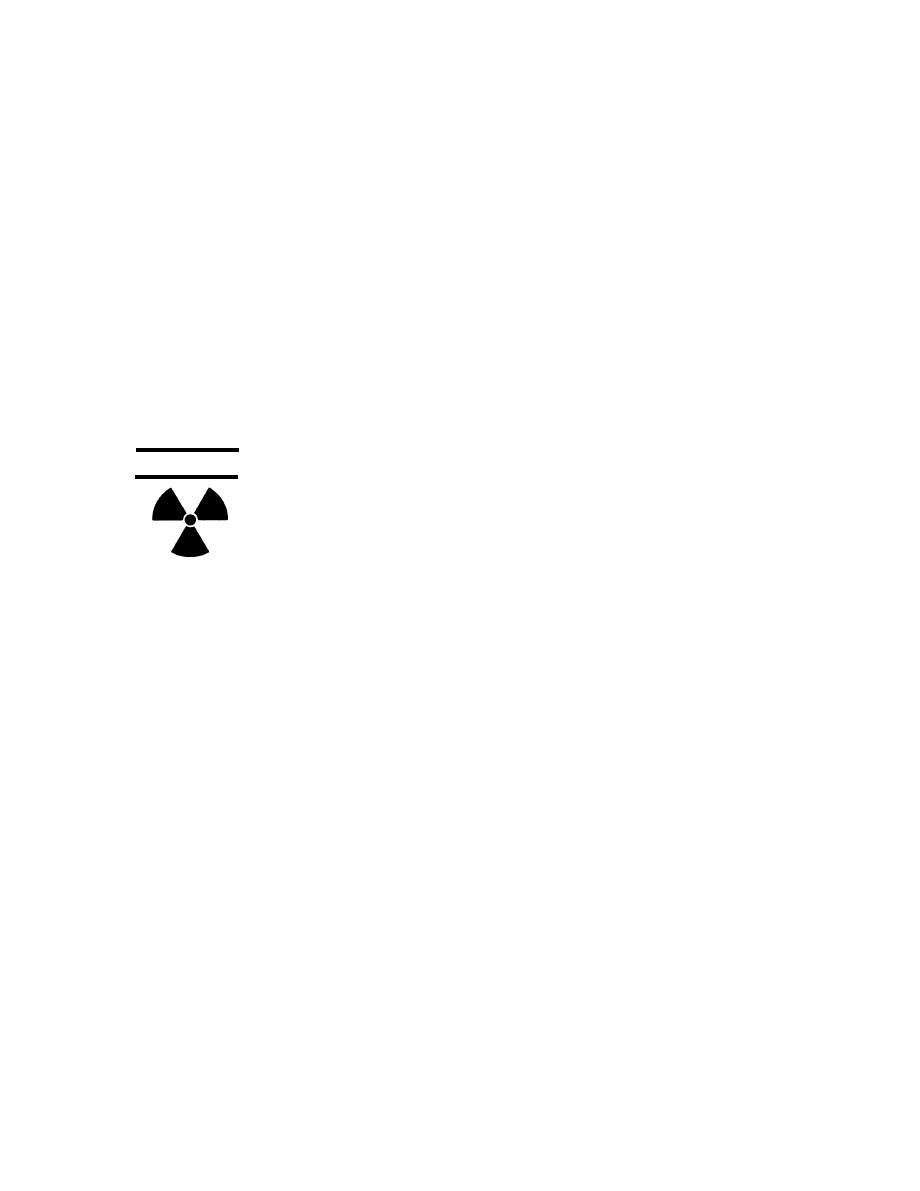 |
|||
|
|
|||
|
Page Title:
Section VIII. COMBINING METHODS |
|
||
| ||||||||||
|
|
 TM 43-0002-31
b. Burying.
(1) Disassemble equipment, if time permits.
(2) Scatter parts widely in lakes, streams, riv-
(1) Disassemble equipment.
ers, swamps, or other bodies of water.
(2) Bury priority components separately. For
example, bury priority one in a different place from prior-
(3) If time is critical, dump entire item in any
it y two.
body of water which is deep enough to allow equipment
(3) Use holes or latrines for burial places.
to be submerged out of sight and difficult to recover.
(4) Filters used in chemical-biological protec-
(4) Cover equipment with dirt, sand or gravel
acquired from diggings. If bulldozers are available, use
tive masks and gas-particulate filter units will also be
them to cover large quantities of small items with dirt,
damaged when submerged in water.
sand or gravel.
e. Special Procedures for Destroying Radioactive
(5) Leave as little evidence as possible as to
Sources.
place of burial. Cover with leaves, snow, or other debris.
(1) Burying. Burying is the safest method for
Brush sand, dirt, or snow to disguise burial spot. Drive
disposing of radioactive sources in a combat zone.
vehicles over burial area. Remove or scatter spoil left
About 7.5 inches of earth will reduce the radiation from
from diggings.
the source by a factor of about one-half. If time permits,
c. Hiding.
place the source in a container (piece of pipe, box, or
case) for burial. Besides the extra shielding, this will
(1) Disassemble equipment, if time permits.
decrease chances of the equipment being broken or
(2) Hide priority parts in caves or rubble.
(3) Cover and camouflage entrances to caves.
contaminated with dirt. This would help preserve the
materiel for use if retrieved later. Mark the location of the
d. Dumping in Water.
burial site on a map. Report the location to the local
WARNING
radiation protection officer (AR385-11).
(2) Scattering or hiding. Use these methods if
time does not permit digging holes for burying the
radioactive sources. Mark the location of the hiding
places for the burial site on a map. Report the location to
the local radiation protection offier (AR385-11).
Radiation hazard. Do not use mechani-
cal means, demolition, fire, gunfire, or
dumping in water to destroy radioactive
sources. Exposure to radiation from the
source may cause casualties or deaths.
Section VIII. COMBINING METHODS
2-24. Combining Methods. Not every situation can
b. If equipment is to be buried, hidden, or dumped
in water, and time is available, destroy priority parts by
be covered for determining the best combination of
mechanical means first.
methods to destroy equipment. In each case the method
c. When it is desirable to dump equipment in a body
or combination of methods must be determined on the
of shallow water, scatter small, vital components so that
basis of existing factors such as: equipment to be de-
they will be completely submerged and not easily re-
stroyed; available time, personnel, and materials re-
covered. Destroy components too large for dumping by
quired for destruction; and area in which destruction is to
demolition, burning, burying, or, if time is critical, leaving
take place.
them behind. However, do not leave behind any priority
parts of any size. If equipment is not completely de-
2-25. Procedures for Combining Methods.
stroyed, make sure that the enemy cannot make equip-
a. Always attempt to destroy priority parts by
ment usable by cannibalization.
mechanical means first. Then destroy the rest of the
equipment by demolition or burning. In any case, use
mechanical means before using other methods.
2-10
|
|
Privacy Statement - Press Release - Copyright Information. - Contact Us |